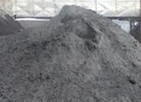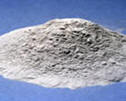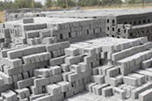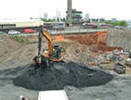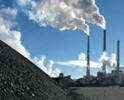Appeal: Please go through the link
and then proceed for the next information
https://www.sciencemag.org/news/2018/10/what-massive-database-retracted-papers-reveals-about-science-publishing-s-death-penalty
Nanotechnology for Better Living
Everything on Earth is
made up of atoms:- the food we eat, the clothes we wear, the
buildings and houses we live in and our bodies too.
Nanotechnology is the engineering of functional systems at the
molecular/atomic level and involves the ability to see and to
control individual atoms and molecules. The discovery of these
small materials (nanomaterials) is widely acknowledged as a
major triumph of human ingenuity in modern times. This discovery
has led to the emerging field of nanotechnologies, which is
paving the way for a new technological revolution. Such
developments may usher in new industrial revolutions, capable of
radically transform almost all industrial sectors in the coming
years. The social sciences and humanities have significant roles
to play in nanotechnology beyond addressing the issues of public
perception and media coverage.
Today's scientists and engineers are finding a wide variety of
ways to deliberately make materials at the nanoscale to take
advantage of their enhanced properties such as higher strength,
lighter weight, increased control of light spectrum, and greater
chemical reactivity than their larger-scale counterparts. Some
of these areas are as medicine
(researchers are developing customized nanoparticles, the size
of molecules that can deliver drugs directly to diseased cells
in human body. When it's perfected, this method should greatly
reduce the damage treatment such as chemotherapy does to a
patient's healthy cells), electronics
and IT (it holds some answers for how we might
increase the capabilities of electronics devices while we reduce
their weight and power consumption),
food (having an impact on several aspects of food
science, from how food is grown to how it is packaged. Companies
are developing nanomaterials that will make a difference not
only in the taste of food, but also in food safety, and the
health benefits that food delivers),
fuel cells (it is being used to reduce the cost of
catalysts used in fuel cells to produce hydrogen ions from fuel
such as methanol and to improve the efficiency of membranes used
in fuel cells to separate hydrogen ions from other gases such as
oxygen), solar cells
(companies have developed nanotech solar cells that can be
manufactured at significantly lower cost than conventional solar
cells), batteries (companies
are currently developing batteries using nanomaterials. One such
battery will be a good as new after sitting on the shelf for
decades. Another battery can be recharged significantly faster
than conventional batteries), space
(it may hold the key to making space-flight more practical.
Advancements in nanomaterials make lightweight spacecraft and a
cable for the space elevator possible. By significantly reducing
the amount of rocket fuel required, these advances could lower
the cost of reaching orbit and traveling in space.),
fuels (it can address the
shortage of fossil fuels such as diesel and gasoline by making
the production of fuels from low grade raw materials economical,
increasing the mileage of engines, and making the production of
fuels from normal raw materials more efficient.),
better air quality (it can
improve the performance of catalysts used to transform vapors
escaping from cars or industrial plants into harmless gasses.
The larger surface area allows more chemicals to interact with
the catalyst simultaneously, which makes the catalyst more
effective), cleaner water
(it is being used to develop solutions to three very different
problems in water quality, chemical
sensors (nanotechnology can enable sensors to detect
very small amounts of chemical vapors. Various types of
detecting elements, such as carbon nanotubes, zinc oxide
nanowires or palladium nanoparticles can be used in
nanotechnology-based sensors. Because of the small size, a few
gas molecules are sufficient to change the electrical properties
of the sensing elements. This allows the detection of a very low
concentration of chemical vapors.),
fabric (making composite fabric with nano-sized
particles or fibers allows improvement of fabric properties
without a significant increase in weight, thickness, or
stiffness as might have been the case with previously-used
techniques), etc. construction
(This technology can be used in many different areas of design
and construction processes since, nanotechnology generated
products have many unique characteristics. These characteristics
can, again, significantly fix current construction problems, and
may change the requirement and organization of the construction
process). Tremendous
progress has been made in the area related to research, design,
development, testing and commercialization of some of these
materials all over the world. However, significant challenges
still remain to further develop and improve the properties of
these materials for maximum utility and widespread use. This is
the main driving force for holding
Nanotechnology
for Better Living
international conference with a theme of
Technological Advancements of
Fly Ash, Nanostructured Carbons and Polymer Composites
around the globe and bringing together academicians and
researchers to shear knowledge and exchange their views on
Topics
Session-1: Ingredients for plastics/elastomers/resins
Session
2: Polymerization reactions and kinetics
Session
3: Characterizations of plastics/rubbers/ composites
Session-4: Plastics
Session-5:
Engineering polymeric fibers
Session- 6: Engineering polymeric films
Session-7:
Engineering rubbers
Session-8:
Resins
Session-9:
Emerging plastic blends
Session-10:
Particulate reinforced plastics/resins
Session-11:
Short fiber reinforced plastics/resins
Session-12:
Thermoplastic elastomers and their composites
Session-13:
Advanced polymer/composite processing
Session-14:
Structural composites-Long fiber/fabric
Session-15:
Composites from recycled plastics, rubbers and fibers
Session-16:
Energy storage and conversion
Session-17:
Defense
Session-18:
Biomaterials/medical implants and devices
Session-19:
Water and environment
Session-20:
Food packaging
Session-21:
Sports and Leisure
Session-22:
Automotive applications
Session-23:
Rubber products
Session-24:
Paints and Adhesives
Session-25:
Civil Applications
Session-26:
Miscellaneous applications
Session-27:
Simulation of polymers composites and processing
Session-28:
Fly Ash, Publisher Elsevier
Section-A: Properties
A1: Fly ash A2: Classifications and compositions
A3: Preparation A4: Functionalization
A5: Properties A6: Handling
A7: Special class of fly ash
-White -Hydrophobic -Hollow
sphere
-Encapsulation
A8: Production around the globe A9: Safety and
health issues
Section-B: Composites
B1: Synthetic polymer based composites
-polyurethane
-poly(vinyl alcohol
-acrylonitrile butadiene styrene -polyethylene
-epoxy -polypropylene
-polypropylene/ethylene-propylene-diene
terpolymer
-polyesteramide
-polyvinyl chloride
-polyaniline
-recycled polymer
B2: Geopolymer based composites
B3: Metal matrix composites
-aluminium -aluminium and boroncarbide
-aluminum
and Silicone carbide
-aluminum-silicone
alloy
-magnesium
B4: Ceramic matrix composites
-barium zirconate titanate ceramic-Portland
-analcime-zirconia
composite -aluminum oxide ceramic composite
B5: Fiber reinforced composites
B6: Carbon based composites
Section-C:
Applications
C1: Cement C2: Concretes C3: Bricks and
blocks
C4: Lightweight aggregates C5: Road construction
C6: Soil stabilization C7: Asphalt
filler
C8: Waste water treatment C9:Acid treatment
C10: Scrubber sludge solidification
C11:Oil/gas well sludge solidification/detoxification
C12: Mineral wool C13:Bricks for
radiation protection
C14: Boards C15:
Li-ion battery
C16: Machine tool C17: Oil
recovery
C18: Electrostatic charge dissipation C19: Dielectric
C20: Pressure sensitive sensor C21: Electromagnetic
interference (EMI) shielding
C22: Anticorrosive coating C23: Other applications
For
more information please contact
Sixth International Conference on
Nanotechnology for Better Living,
2019
Prof.
Kamal K. Kar
Advanced
Nanoengineering Materials Laboratory
Department of Mechanical Engineering and Materials Science
Programme
Indian
Institute of Technology Kanpur, Kanpur-208016, (UP) India
Email: flyash2018 @ gmail .com and copy to kamalkk @
iitk.ac.in
Phone :+91-512-2597687
(O),+91-512-2598703(R), 09415081153, 08005059301
Fax : +91-512-597459, +91-512-597408
